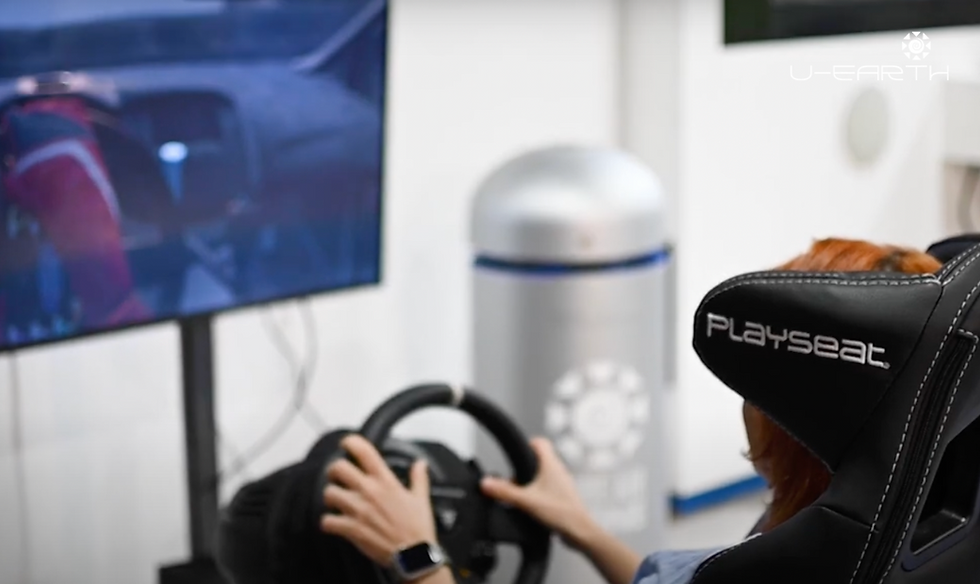Air Quality in Sport - How Air Pollution Affects Sporting Performance
- U-Earth Team

- Jan 27, 2022
- 3 min read
Updated: Feb 1, 2022
Air quality in sport is an area that deserves to be more studied than it currently is. Sports science has exploded in popularity over the past few decades but how air pollution affects sporting performance is ordinarily not part of that thinking. Not only can we look at what professional athletes are eating and drinking, as well as studying their training, but more often than not, what they are breathing could also have an impact. All too often it is forgotten but here is why it shouldn’t be and how sports organisations can face this challenge.

Photo by Mari Carmen Del Valle Cámara on Unsplash
How can air pollution affect sporting performance?
In professional sport, every team is looking for an edge on their opponents. These can vary wildly from looking at nutrition and individual exercises to team tactics and training regimes. Sporting performance isn’t always just about the match itself either, but focusing on both pre- and post-match routines. Analysis of what did and didn’t go right - and why - can also be extremely helpful. But there is at least one area that is under researched and that is by looking at air quality in sport. Or rather, air pollution in sport and the effect it has on professional athletes.
What are the dangers of air pollution in sport?
Everybody knows that air pollution is dangerous to humans but some might not know the extent to which poor air quality can be harmful. Air quality is often 2-5x worse indoors that outdoors, meaning training for important matches can actually be more harmful for professional athletes than the games themselves. Air quality in sport needs to be looked at more seriously because there are key areas that can definitely prove a factor in the outcome of a match.
Put simply, air pollution affects sporting performance by:
Affecting breathing - causing coughing, wheezing and other side effects;
Causing long term health effects with even cancer being linked;
Affecting focus, which can lead to poor performance from players;
Causing poor decision-making from both athletes and officials.
The dangers of air pollution in sport don’t stop there either. Sporting events naturally increase air pollution thanks to traffic and general fan activity both before and after a game, as seen in a study on the dangers of air pollution in the Chinese Super League. It’s a crisis that needs to be solved.
What research has been done into air quality in sport?
Most air quality research comes to the same conclusions with findings and solutions often being similar. We all know that poor air quality is bad for our health so it makes sense that it would be bad for a professional athlete as well. That being said, there have been a number of studies into air quality in sport over the years and how air pollution affects sporting performance.
Research into air pollution in sport has shown that higher levels of ozone and PM10 affected football players’ number of passes and pass accuracy in Germany; that a higher level of PM 2.5 during a chess match leads to a 26.3% probability of players making an erroneous move; and that a 1ppm (parts per million) increase in carbon monoxide over a three-hour period caused an 11.5% increase in the propensity of Major League Baseball umpires to make incorrect calls.

How to limit the dangers of air pollution in sport?
According to the World Health Organization, 4.2 million people die each year due to being exposed to ambient outdoor air pollution. With figures like that, everybody should be paying attention to the air quality problem, especially when considering air quality in sport. Changes are being made, albeit slowly, with the likes of South Korea allowing sporting events to be cancelled when fine dust levels reach more than 300 micrograms per cubic meter (㎍/㎥) with an advisory notice placed when dust levels exceed 150 micrograms.
As well as this, some sporting organisations need to incentivise the use of public transport to bring down the use of cars and other vehicles being driven to games. After all over 1.2 million pounds’ of CO2 can be emitted by fans travelling for a single game to the MetLife stadium in New Jersey.
A Pure Air Zone to improve Air Quality in Sport
U-Earth’s commercial air purifier is used to help reduce the dangers of air pollution in sport. A biotech solution that uses the power of natural world to improve air quality in sport and other industries, the Pure Air Zone has already been used in Formula 1, MotoGP and on the WTA Tennis Tour.
By offering air quality monitoring alongside the commercial air purifiers, athletes and referees can perform to the best of their ability, while spectators can also feel safe when they attend a sporting event.
For more information about Pure Air Zone, get in touch with one of our air quality specialists or sign up to the U-Earth newsletter.




Comments